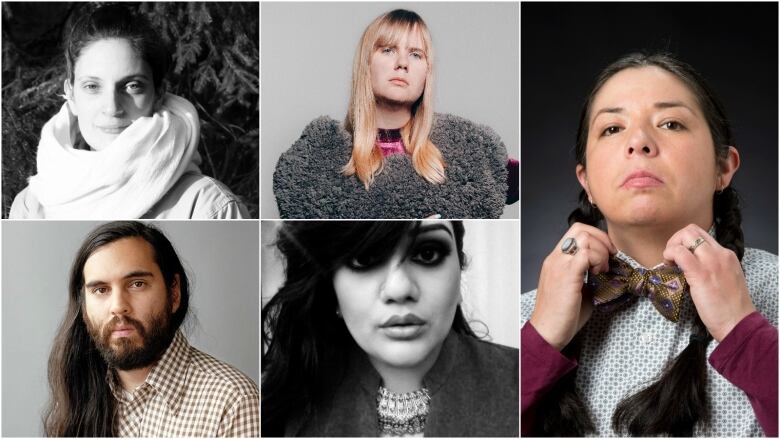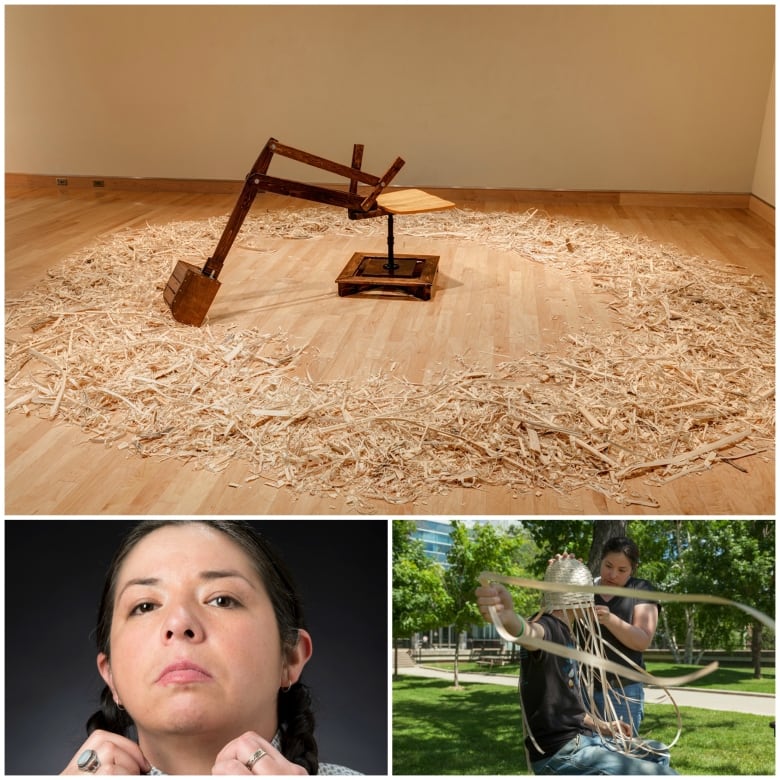Sobey Art Award reveals female-dominated short list for $50K prize
Winner to be announced in late October

Women dominate the field of this year's Sobey Art Award short list, announced Tuesday, holding four of the five spots.
The $50,000 prize — one of Canada's top prizes for contemporary art — is given out each year to a contemporary artist under the age of 40.
One nominee is selected in five different regions of the country, with the finalists whittled down from an earlier long list. The award is Canada's equivalent to the Turner Prize in Britain, which recently dropped its age restriction.
This year's Sobey nominees are:
- Atlantic: Performance and installation artist Ursula Johnson
- Quebec: Photo artist and videographer Jacynthe Carrier
- Ontario: Performance and video artist Bridget Moser
- Prairies and the North: Multimedia artist Divya Mehra
- West Coast and the Yukon: Photo and text-based artist Raymond Boisjoly
Their work will be exhibited in Toronto at the Art Museum at the University of Toronto, starting in late October.
The winner will be announced during a gala at the university on Oct. 25. The exhibit continues through Dec. 9.
Founded in 2002, the Sobey has been awarded to 13 prominent Canadian contemporary artists, including the late Inuk artist Annie Pootoogook. Last year's winner was Vancouver-born multi-media artist Jeremy Shaw.
Each finalist gets $10,000. Here's a closer look at this year's short list.
Ursula Johnson (Dartmouth, N.S.)

Johnson, who is of Mi'kmaw First Nation ancestry, specializes in performance and installation art. She incorporates her heritage into her art, which has included basket weaving. She was the first female Mi'kmaw student to graduate from the Nova Scotia College of Art and Design.
Johnson has previously been longlisted for the Sobey, but a win for her would be signficant: no artist from the Atlantic region has yet been awarded the prize.
Jacynthe Carrier (Quebec City)

Carrier uses photography and video in her art, focusing on the relationship between people, where they live and the environment. She has a particular fascination for places that have been abandoned. Carrier has exhibited in galleries around Quebec and her videos have been shown at shows in the United States, Brazil and Europe.
In 2011, she won the Prix à la création artistique by the Conseil des arts et des lettres du Québec.
Bridget Moser (Toronto)

Moser is a performance artist, who works with video and a whole lot of humour. This includes prop comedy, absurd literature and intuitive dance. Her comedy is referenced in the names of her artworks, such as A Leaf That Tastes Like a Pencil, Local Snake Eats Own Tail and Freak on a Leash — for which she drank from a poodle-shaped watering can and flailed alongside a waving, inflatable tube man.
Moser has exhibited at Toronto's Art Gallery of Ontario, the National Arts Centre in Ottawa and has been an artist in residence at the Banff Centre.
Divya Mehra (Winnipeg)

Mehra uses sculpture, installation, video and drawing (among other media) to address "the long-term effects of colonization and institutional racism." She splits her time between Winnipeg, Delhi and New York, drawing inspiration and touching on the colonial roots of each place in her work.
Mehra has exhibited in Canada, India and China and taken part in shows in prestigious galleries, like New York's MoMA PS1.
Raymond Boisjoly (Vancouver)

Boisjoly works with photography and text. An Indigenous artist of Haida and Québécois descent, he explores themes related to his heritage, juxtaposing it with pop culture.
Boisjoly has had solo shows at galleries in Ottawa, Seattle, London, Ont., and in his hometown of Vancouver, where he is represented by the Catriona Jeffries Gallery, a hub for contemporary art.
With files from Jessica Wong